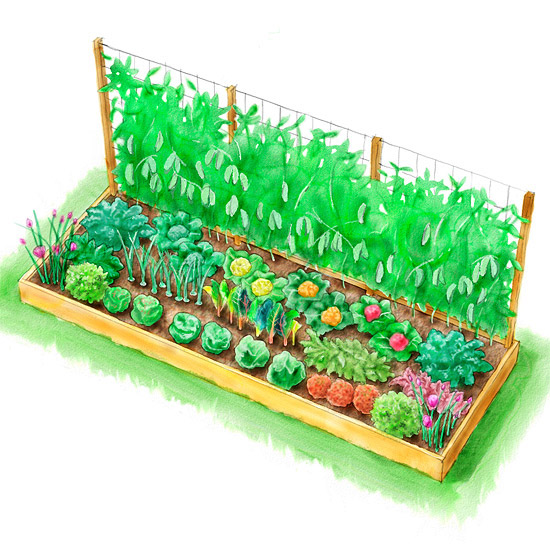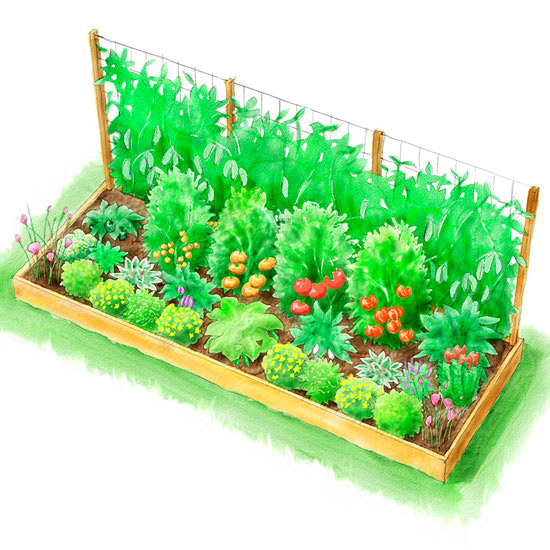





The White House Kitchen Garden consists of 34 raised beds that provide 1,500 square feet of growing room. Most of us don't have that kind of space to spare in our backyards. (But then, unlike the White House chefs, we don't feed the First Family, the West Wing staff, and visiting dignitaries!) That's why we've designed two plans for a 4x12-foot garden, equivalent to a three-season footprint of one raised bed in the White House Kitchen Garden.
Our garden plans feature vegetable and herb varieties are White House chef favorites. Most are time-tested heirlooms that aren't commonly sold in produce markets. All are chosen with an eye for ornamental value. Consideration is also given to space-saving traits. Vine crops (climbing peas and pole beans) are grown vertically on a 5-foot-tall trellis in the back of the bed.
Get instructions on building your own raised bed!
continue reading below
Our cool-season garden features vegetables and herbs that thrive in the chillier weather of spring and fall. Sow seeds of lettuces, spinach, chard, peas, beets, and carrots directly in the soil as soon as the garden can be worked in early spring and again four to five weeks before the first average fall frost. Start seeds indoors of kale, broccoli, cauliflower, and onions four to five weeks before the last average spring frost and again in midsummer for a fall harvest. Thyme and chives are planted just once; these hardy perennial herbs come back year after year.

Our warm-season garden features vegetables and herbs that need hot weather to flourish. Start seeds indoors of tomatoes, peppers, eggplants, dill, basil, sage, rosemary, and marigolds eight weeks before outdoor night temperatures are reliably above 50 degrees F. Transplant seedlings into the garden after all danger of frost is past. Sow seeds of beans and cucumbers directly in the soil after outdoor night temperatures are reliably above 50 degrees F and the soil is warm.
Copyright © www.100flowers.win Botanic Garden All Rights Reserved